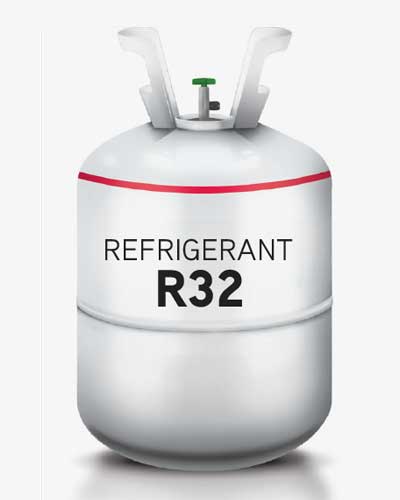
Comparing PTAC and Mini-Split HVAC Systems: Which Is Right for Your Client?
Packaged Terminal Air Conditioners and Mini-Splits are both typically ductless systems capable of providing both heating and cooling with minimal equipment. Both systems are often used to heat singular rooms and small spaces (though multi-zone mini-splits can cool multiple rooms). They are also both commonly wall-mounted systems, but there are some substantial differences in their applications. Below we’ll compare these systems and discuss what they are suitable for.
What is a Packaged Terminal Air Conditioner (PTAC)?
Packaged Terminal Air Conditioners (PTAC) and Packaged Terminal Heat Pumps (PTHP) refer to a ductless heating and cooling system, often mounted on the wall near the floor of a room, which provides heating and cooling to a specific area in a space or a single room.
These systems are one, single unit that is installed through the wall. It is similar in construction to a window air conditioner but is a more advanced and permanent solution. These units must be mounted on an outside wall and require a large hole to be cut out of the wall to fit the unit. The wall must then be reinforced upon installation to hold the unit in a sleeve. This limits the potential locations for which they can be installed in the space. One of the main advantages of PTACs and PTHPs is their ability to provide ventilation. This built-in ventilation makes PTACs and PTHPs popular choices for hotels, studio apartments, and similar commercial spaces that have certain ventilation requirements in their building codes.
What is a Ductless Mini-Split System?
Mini-splits work a lot like a traditional air conditioner or heat pump. They consist of an outdoor condenser connected to one or more indoor air handlers via a copper lineset through a small hole in an exterior wall (usually). Mini-splits are much more versatile than PTAC units in their applications due to the multiple configurations available for mounting indoor air handlers. While mini-splits are most often mounted on an exterior wall, there is flexibility regarding where they can be installed. Of course, if the indoor unit is installed somewhere other than an exterior wall, the visibility of the lineset must be considered but for those worried about aesthetics, a little creativity can keep the lines hidden from view for the most part.
Mini-splits have become popular in the residential market, where PTACs and PTHPs are less common. This is often because mini-splits have higher seer ratings and, in turn, greater energy efficiency. While PTACs often come with a cheaper upfront cost, mini-splits offer a lower cost of operation in the long term. In residential applications, energy efficiency and cost of operation are important factors for many homeowners in choosing a home HVAC system.
PTAC Vs Mini-Splits: Which System is Right for Your Client?
The two biggest advantages that mini-splits have over PTAC units are energy efficiency and ease of installation. Mini-splits are currently at the forefront of energy efficiency in the HVAC industry. While they may have a higher price tag than PTAC systems do, their high efficiency makes them more cost-effective in the long run with much lower operating costs across the board. Additionally, mini-splits have a variety of settings on the indoor air handler that will allow you to change the fan speed and direction of airflow for your comfort. They also tend to be quieter when running than typical PTAC systems.
Mini-splits also tend to be easier to install in residential buildings than PTACs. PTACs are bulky and because they are one, single unit, their installation options are limited to where they can be placed without taking up too much wall and floor space. Since mini-splits were designed with residential spaces in mind, there are more indoor unit options available for homeowners and their contractors to choose from. Mini-split indoor air handlers come in the form of wall-mount, floor-mount, and hidden ceiling units, and can be placed just about anywhere depending on the needs of the space. PTACs don’t have that many options available by comparison, they need an exterior wall, and they need a large space on that wall.
In a residential application, the mini-split will outperform the PTAC every time. However, many property owners of hotels and apartments choose to install PTACs and PTHPs instead simply because of the ventilation they, combined with the possibility of lower upfront costs. Building codes for commercial spaces often face ventilation requirements that aren’t applicable to residential homes. If a commercial building owner must choose between installing PTAC units or installing mini-splits along with additional ventilation measures to accommodate building codes, it makes sense that they’d consider installing PTAC units. Mini-split systems, whether installed in the ceiling or mounted to the floor or wall, represent a significant advancement in the world of HVAC. In this comparative analysis of PTAC and mini-splits, we've delved into the key differences that make these systems unique. For homeowners seeking energy-efficient and versatile heating and cooling solutions, the choice is clear – Mini-splits come out ahead. However, there are some instances where PTAC units make sense for commercial buildings.
As for HVAC contractors, understanding the nuances of these systems is essential to provide top-notch service for your clients. By referencing our detailed system documentation and utilizing our comprehensive system builder tool, you can ensure precision and expertise in every installation. These resources, developed with the needs of professionals in mind, provide valuable insights into both the technical and practical aspects of PTAC and mini-split systems.
In today's ever-evolving HVAC industry, staying informed and equipped is crucial. GREE strives to keep contractors at the forefront of innovation, ensuring that they can meet the diverse needs of their clients. For homeowners, we encourage you to use our contractor locator tool to find a local GREE-certified HVAC specialist. Whether you're a homeowner looking for the ideal HVAC solution or a contractor striving for excellence, GREE has the resources and products you need to succeed on your next project.





